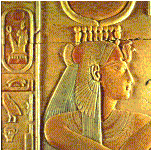|
Global
|
focus
points
|
 |
| "The
field of forensic medicine utilizes sophisticated technologies
to conduct its investigations. Computerization and advanced
instrumentation enable the detection and identification
of minute quantities of chemical substances while scanning
electron microscopy and detect gunshot residues on both
suspects and victims. However, forensic medicine deals
not only with criminal cases, but also with accident
prevention, substance abuse, child abuse, and motor
vehicle accidents" (Chien, 1996). |
 Australia
Australia |
focus
points
|
 |
Insert forensic
focus points here
 Canada
Canada |
focus
points
|
 |
Insert forensic
focus points here
 China China
|
focus
points
|
 |
"Evolution
of Forensic Science- Legal medicine was the term used for
the application of medical knowledge to the investigation
of crime. The Chinese book Hsi Duan Yu (The Washing Away
of Wrongs), which appeared in 1248, provided the first association
of medicine and law (Kind & Overman, 1972, cited in
Almirall & Furton, 1995). The book offered useful advice,
such as distinguishing drowning (water in the lungs) and
strangulation (pressure marks on the throat and damaged
cartilage in the neck) from death by natural causes"
(Almirall & Furton, 1995).
 Egypt
Egypt |
focus
points
|
 |
"The Egyptians
and Babylonians possessed considerable knowledge of practical
anatomy, unknown for many centuries to the physicians of
other nations because of religious and social prejudices
against dissection of the dead" (Chien, 1996).
 International
International |
focus
points
|
 |
"The field
of forensic medicine utilizes sophisticated technologies
to conduct its investigations. Computerization and advanced
instrumentation enable the detection and identification
of minute quantities of chemical substances while scanning
electron microscopy and detect gunshot residues on both
suspects and victims. However, forensic medicine deals not
only with criminal cases, but also with accident prevention,
substance abuse, child abuse, and motor vehicle accidents"
(Chien, 1996).
 United Kingdom
United Kingdom |
focus
points
|
 |
"Medico-legal
activities or the role of coroner began in England in the
1100s for the purpose of preventing financial abuses against
the crown by English Sheriffs" (Fisher, 1973; Paul,
1974, cited in Henson, 1987, p. 76).
"Forensic
medicine evolved in England in the 1100's from the medicolegal
need to determine cause of death, so that the decision to
impose a suicide penalty could be rendered" (Spitz
& Fisher, 1980, cited in Schramm, 1991 p. 670).
 United States
United States |
focus
points
|
 |
"The first
autopsy in the US was performed in the 1600s in Talbot County,
Maryland" (Spitz & Fisher, 1980, cited in Schramm,
1991, p. 672).
"The first
colonial coroner ruling was recorded in 1635 in New England"
(Spitz & Fisher, 1980, cited in Schramm, 1991, p. 672).
"The English
coroner system began in the U.S. on January 29, 1637"
(Fisher, 1973, cited in Henson, 1987, p. 76).
Focus Points
Reference
Almirall, .J.
R. & Furton, K. G. (1995). The evolution, practice and
future of the use of science in the administration of justice-
The importance of standards in forensic science. Standardization
News, 23 (4). Retrieved May18, 2002 from: http://www.mdpd.com/astmhtm.html
Chien, H. C.
(1996). History of Forensic Medicine. Retrieved Nov 1997
from http://140.116.5.4/~chungho/history.htm (no longer
functional)
Henson, T. K.
(1987). Medicolegal role in detection and prevention of
human abuse. Holistic Nursing Practice, 1 (2), 75-83.
Rudin, N. (2002)
Forensic science timeline. Education in forensic science.
Website: Forensic DNA Consulting/NR/KPI 1998-02, Retrieved
March 15, 2002 from http://www.forensicdna.com
Schramm, C.A.
(1991). Forensic medicine: What the perioperative nurse
needs to know? AORN American Operating Nurses Journal,
53 (3), 669-692.
Top
of Page